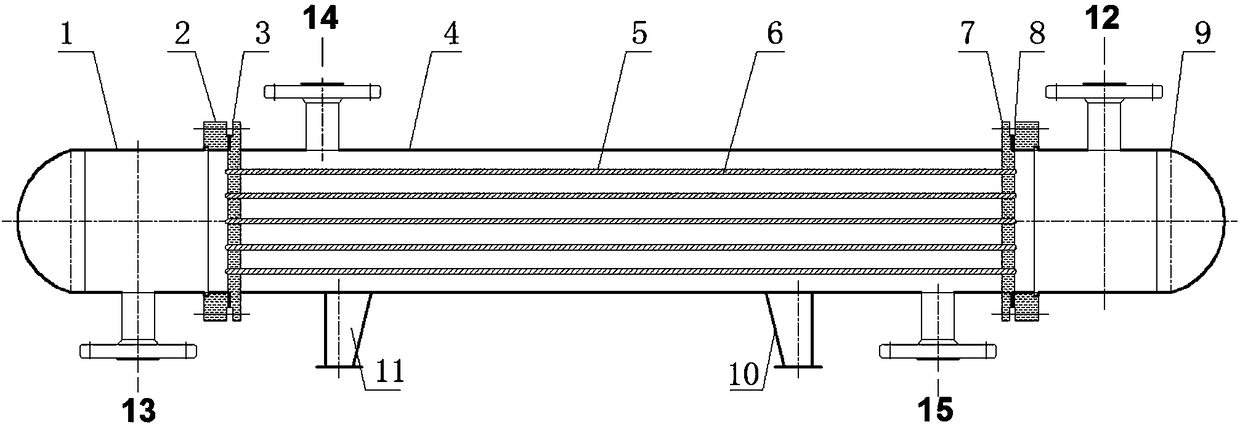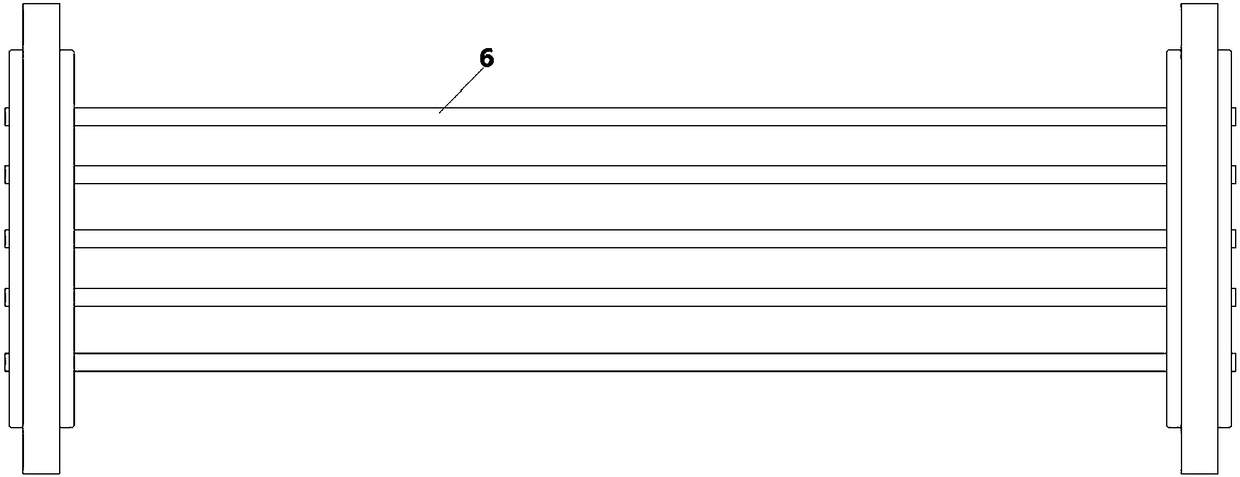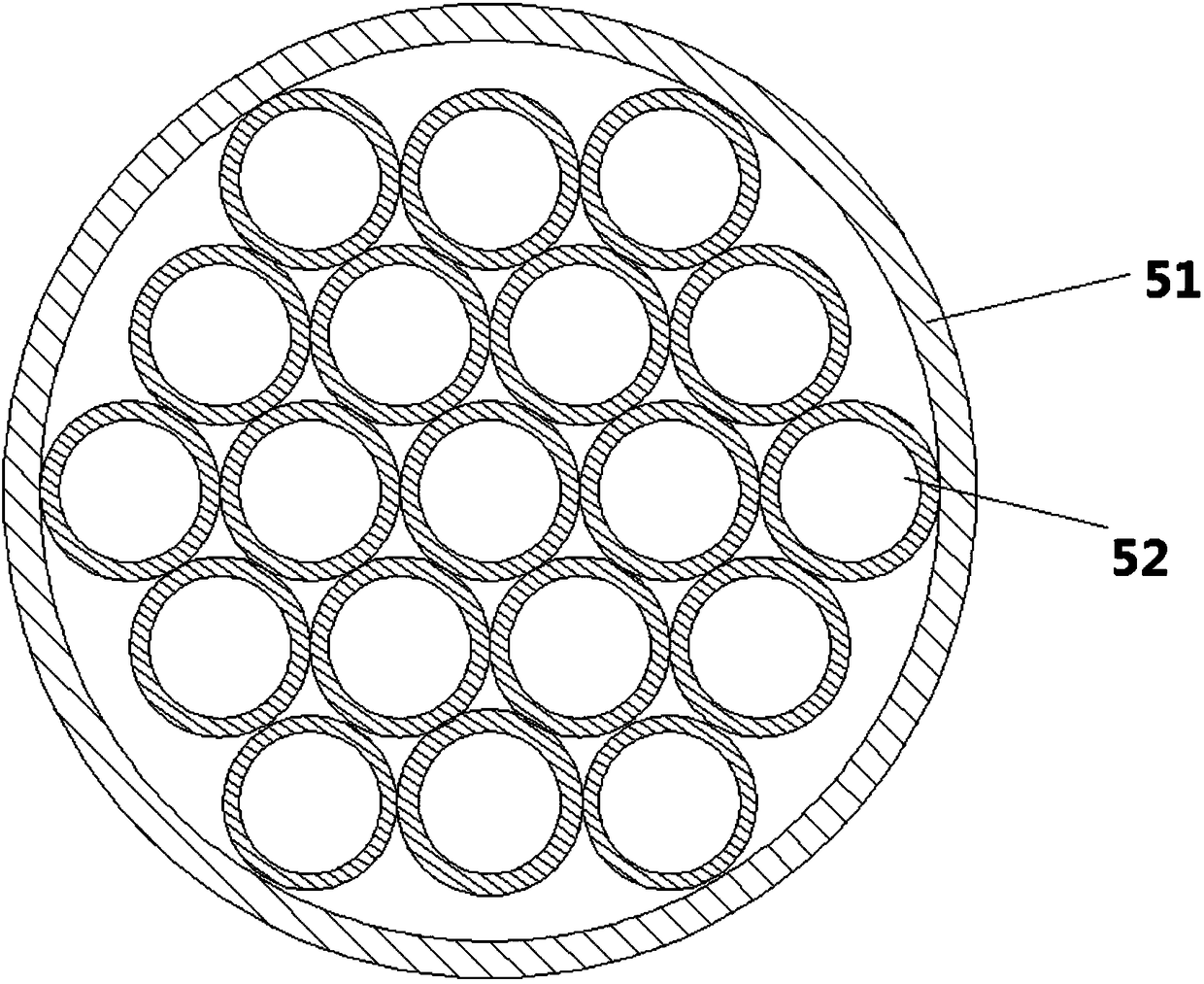Current stabilizer spacing change type non-condensable gas tubular heat exchanger
A technology of shell-and-tube heat exchangers and flow stabilization devices, which is applied in the directions of indirect heat exchangers, heat exchanger types, heat transfer modification, etc., and can solve the problem of vibration and noise of gas-liquid two-phase flow heat exchangers. Unable to achieve the uniformity of the gas phase and liquid phase, and the disturbance of the heat exchange tubes cannot be guaranteed, so as to achieve the effect of reducing the noise level, reducing noise and vibration, and smooth flow
- Summary
- Abstract
- Description
- Claims
- Application Information
AI Technical Summary
Problems solved by technology
Method used
Image
Examples
Embodiment Construction
[0041] The specific embodiments of the present invention will be described in detail below in conjunction with the accompanying drawings.
[0042] In this article, if there is no special explanation, when it comes to formulas, " / " means division, and "×" and "*" mean multiplication.
[0043] It should be noted that, unless otherwise specified, the two-phase flow mentioned in the present invention is a gas-liquid two-phase flow, and the gas here is an insoluble or poorly soluble gas, that is, the gas will not dissolve in the liquid during the heat exchange process.
[0044] like figure 1 A shell-and-tube heat exchanger is shown, and the shell-and-tube heat exchanger includes a shell 4, a heat exchange tube 6, a tube-side inlet pipe 12, a tube-side outlet pipe 13, a shell-side inlet connecting pipe 14 and a shell The outlet connecting pipe 15; the heat exchange tube bundle composed of a plurality of parallel heat exchange tubes 6 is connected to the front tube sheet 3 and the r...
PUM
 Login to View More
Login to View More Abstract
Description
Claims
Application Information
 Login to View More
Login to View More - R&D
- Intellectual Property
- Life Sciences
- Materials
- Tech Scout
- Unparalleled Data Quality
- Higher Quality Content
- 60% Fewer Hallucinations
Browse by: Latest US Patents, China's latest patents, Technical Efficacy Thesaurus, Application Domain, Technology Topic, Popular Technical Reports.
© 2025 PatSnap. All rights reserved.Legal|Privacy policy|Modern Slavery Act Transparency Statement|Sitemap|About US| Contact US: help@patsnap.com



